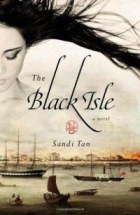In the end, though, I felt underwhelmed. This book broke no mould or new ground. That "octopus scene" touted in some promo material appeared gratuitously tacked on. The protagonist's ordeals lent little poignancy to her survival.
Maybe I should've titled it "Growing old with ghosts".
Cassandra's abilities reminded me of Brian Lumley's Necroscope character, a man who can talk to the dead and raise an army of dead people. Despite this and her toughness, she remains bound by the restrictions from the religious and social mores of her day. She is used, abused, disbelieved and betrayed, particularly by the men in her life.
One would think being a female necromancer would set her free from all that, but perhaps it's due to her reluctance to abuse her gift, or the author's attempts to avoid turning an adult book into some young adult fantasy.
Guess some ghosts are harder to exorcise than others.
This particular time period may yet yield more stories, but I think it's time writers start letting Southeast Asia's pre-war/wartime/post-war era fade into the evening mists along with its gardens, jungles, horrors and other emotional baggage.
Growing up with ghosts
Don't read too much into this dark talefirst published in The Star, 02 November 2012
In present-day Japan, an old lady searches for a book in a library and finds pages torn from it and a picture of her younger self in it defaced. Then, walking outside, she sees a pair of crows collide in mid-flight. In the evening, she gets a mysterious phone call asking for an interview and, much later, a seemingly otherworldly visitor. Shaken, the old lady reaches for a voice recorder and starts recalling her dark past.

The girl, Ling, is the elder of a pair of brother-sister twins and the black sheep of the lot that includes her brother Li and a pair of younger twin girls. Her life starts to change when she discovers her gift.
... She sees dead people ... all the time....
Don't bother calling up filmmaker M. Night Shyamalan about possible copyright infringements of his hit 1999 movie, The Sixth Sense. Nothing of the sort here.
The first ghost Ling sees is of her former babysitter, who vanishes after leaving behind a message: That Ling would leave home for a faraway place. It isn't long before Ling is packed off to South-East Asia, along with her dad and twin brother, to help better the family fortunes.
They end up on the "Black Isle"; from the map in the book, it looks like – but is not quite like – Singapore. The island is "dirty" – haunted – and would get "dirtier" when the Japanese come a-knocking.
It's not long before we see hints that her "gift" is more of a bane than a boon. Nobody believes in her sightings as a child, which would later lead her to adopt the name Cassandra, after the tragic princess and prophetess of Troy. But when the Black Isle finally gains its independence, will she also be free of her ghosts?
One observation made about The Black Isle is that the work straddles young adult and adult fiction, which I find is very much the case. The pages breeze along, despite their not-so-bright tone. But I wonder if the novel was set during a time of conflict as an excuse to weave in elements of dark fantasy.
Racism, swearing and lurid descriptions of all sorts of bad behaviour made me feel uncomfortable, even though the whole novel overall was well-written and – perhaps, a little too – well-imagined.
The Black Isle itself is said to be an amalgam of a number of South-East Asian countries whose evolution mirrors Malaysia's. That, as well as the inclusion of elements of regional folklore and myth makes the novel more relatable, albeit well-worn in its familiarity. As a result, there's little compulsion to pick this book up again after one is done with it.
Still, that so much from real life is incorporated into a supernatural tale begs one to seek out hidden messages in the threads of the story.
Old wisdom contends that each place has its ghosts and penunggu (Malay for "guardians"), and the notion that they will rise up against any injustice done to it, just as the Black Isle's did, has a certain appeal. But raising ghosts and invoking the past can be dangerous, especially if it is to inflame passions or advance someone's selfish agenda.
Or maybe I'm reading too much into what could be a simple ghost story set in familiar territory, meant only to be enjoyed on a sleepless night in a dimly lit room. Can you blame me? After a spell on Sandi Tan's shadowy Black Isle, you'd probably start seeing things, too.
The Black Isle
Sandi TanGrand Central Publishing (August 2012)
472 pages
Fiction
ISBN: 978-1-4555-1654-4
Categories:
Book Reviews,
The Star


